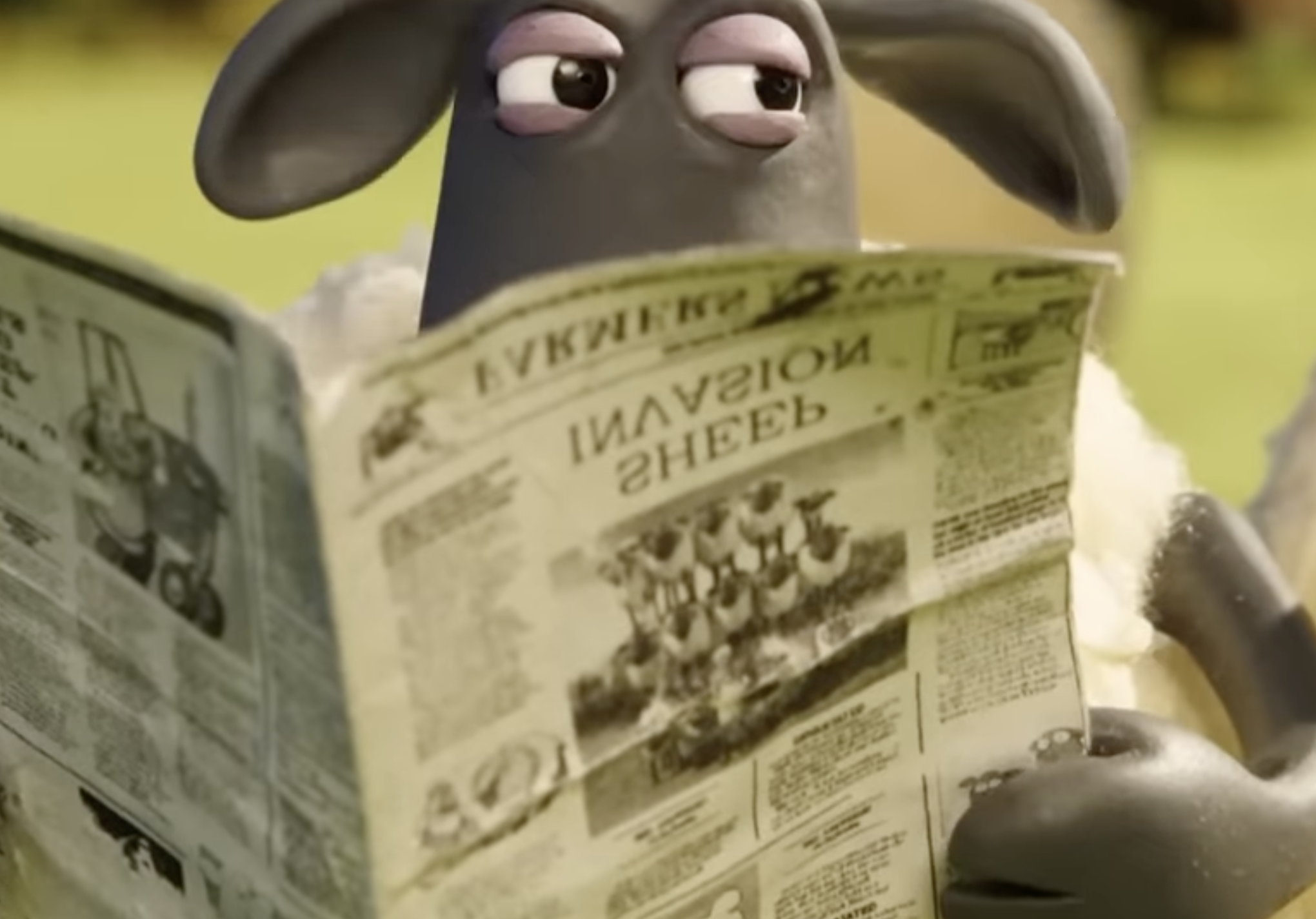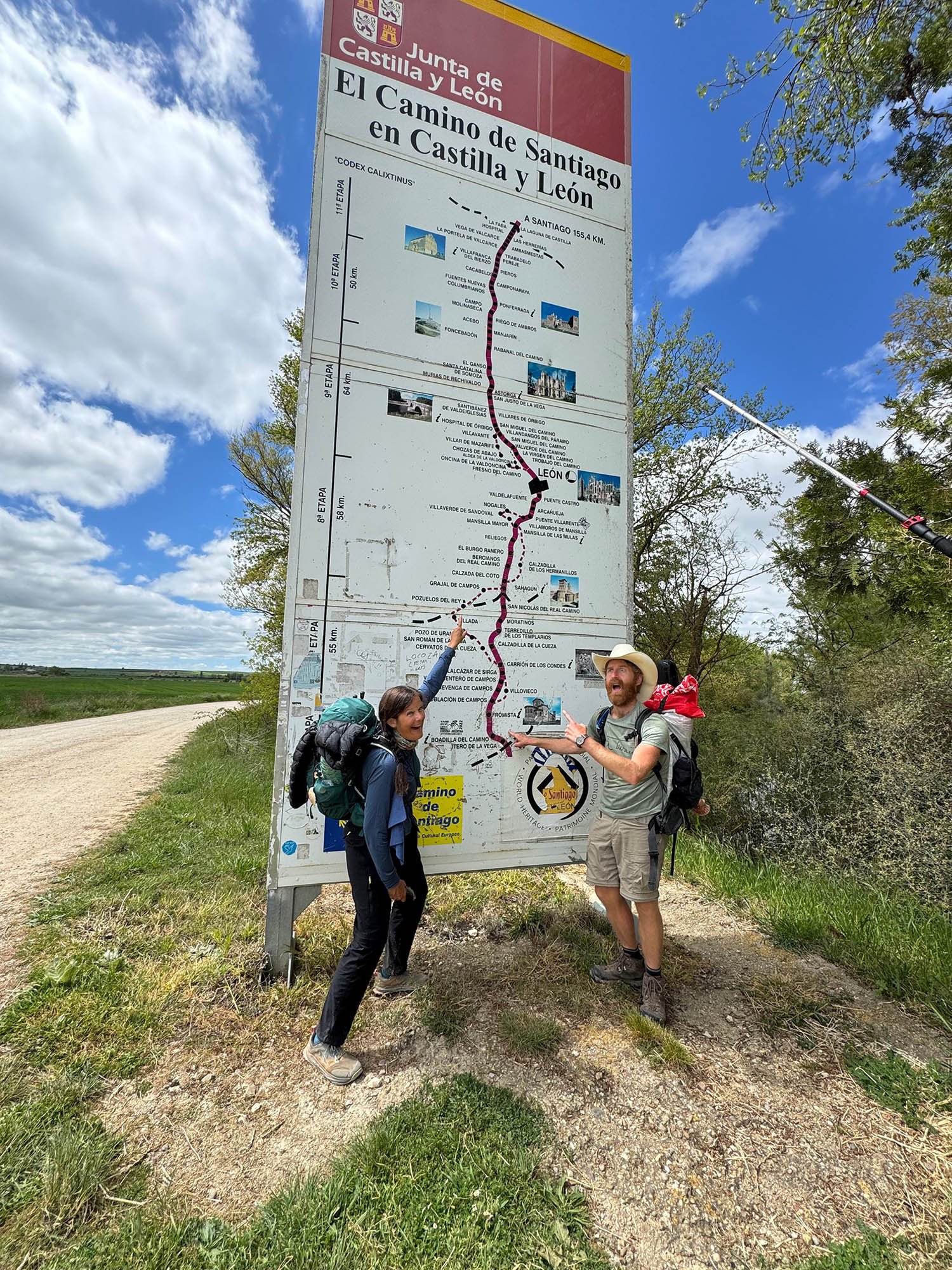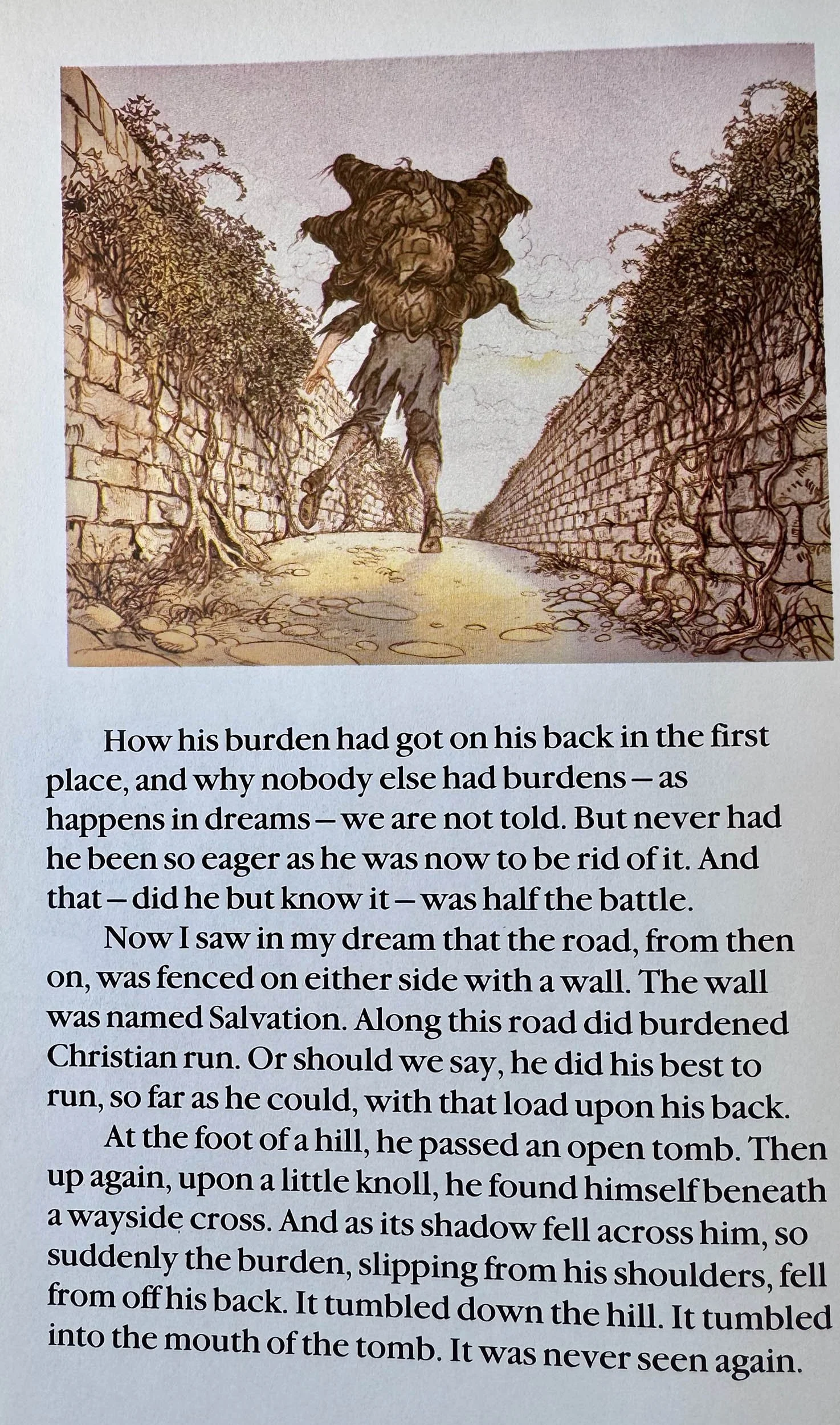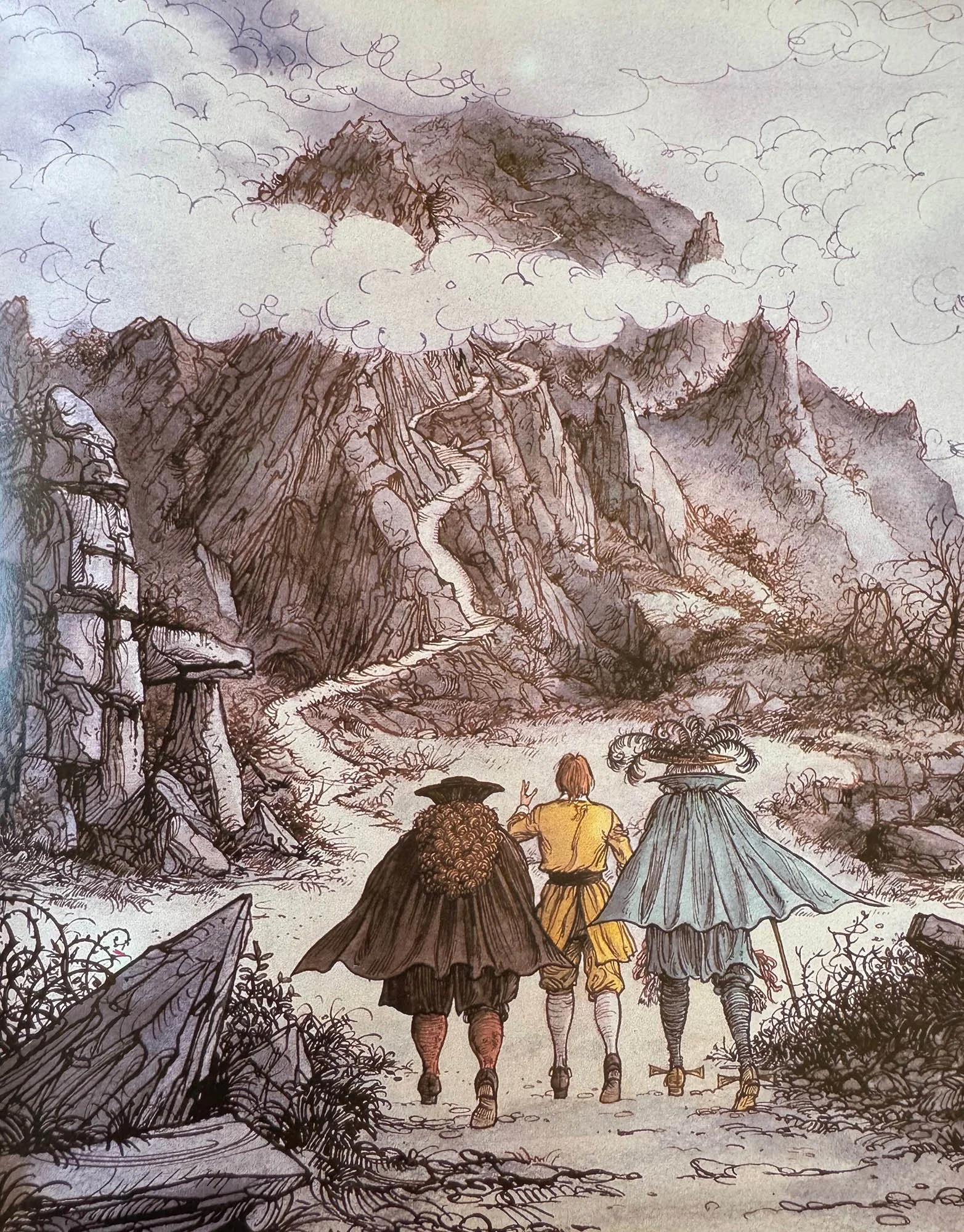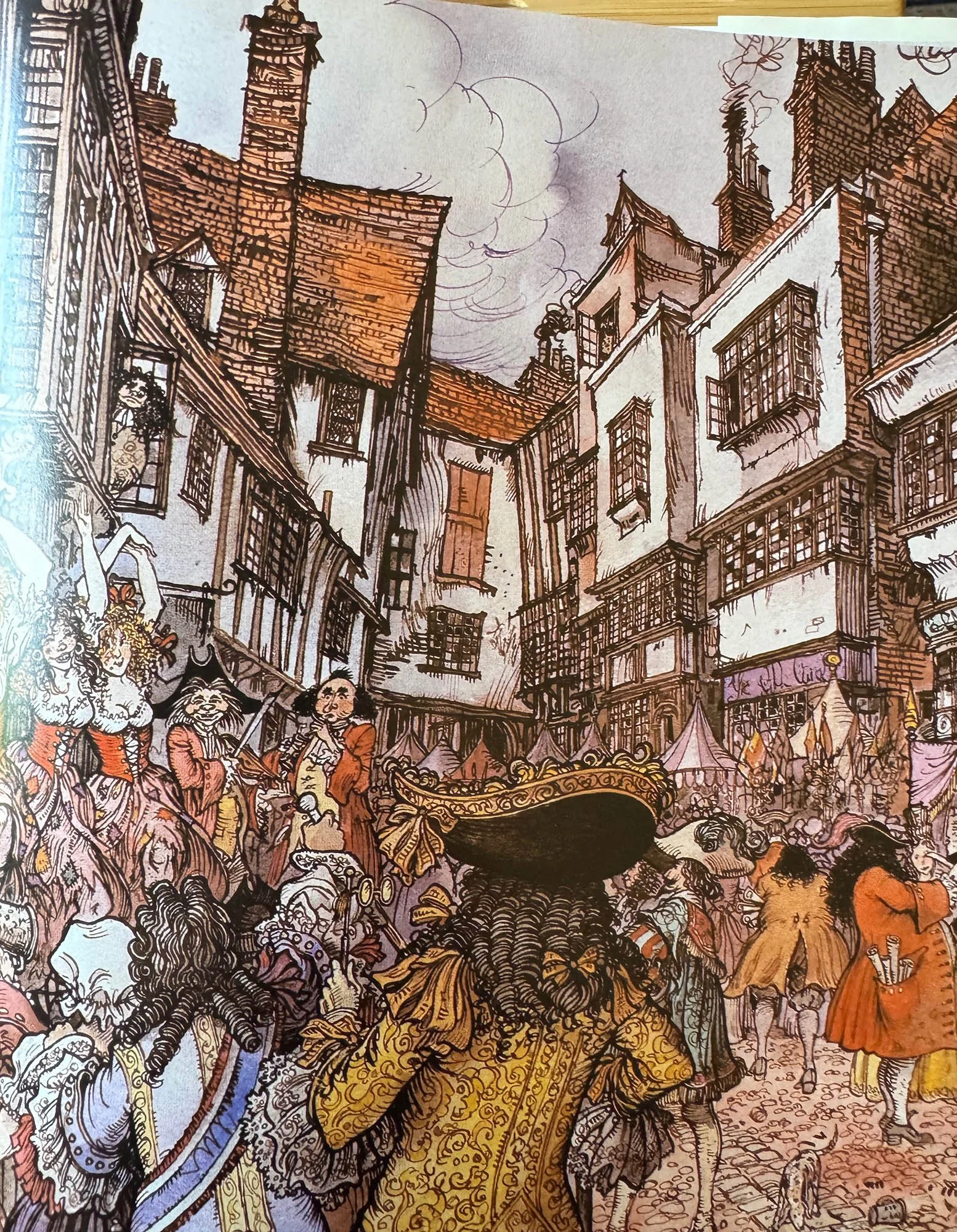Steps, Missteps, and Obstacles in Every Journey
A woman I met on my trip to Italy left our group in Venice to fly to Spain and walk the Camino de Santiago for her 50th birthday.
Ugh! As if walking nearly 20,000 steps a day in Italy was not enough.
One of my professors said that he learned from reading The Lord of the Rings “You can choose whether to get involved in an adventure, but you can’t choose how much it will cost you.” He reminded me near the end of my seminary journey that life is about making choices.
One of my choices includes reading. I’ve followed a guy named Sean, reading his blog for the past few years.
Sean and his wife Jamie made the choice to walk the Camino de Santiago. After weeks of training beforehand, they are almost halfway on the 500 mile journey.
It’s only 381 miles from L.A. to San Francisco! Can you even imagine walking 500 miles?
Over time, I have read about Sean’s painfully difficult childhood. While he doesn’t dwell on trauma and tragedy, he knows hardships have shaped his character, and contributed to his life purpose, continually giving him stories to tell.
“Sean the Sheep”
When I talk about “Sean the Sheep” to my husband, he knows I’m going to tell him something about what’s up with Sean. I nicknamed him “Sean the Sheep” after the Wallace and Gromit character “Shaun the Sheep” (Sean/Shaun, a homonym). His name is Sean Dietrich, also known as “Sean of the South.”
Let me introduce you.
Sean Dietrich is a columnist, humorist, multi-instrumentalist, and stand-up storyteller known for his commentary on life in the American South. His work has appeared in Newsweek, Southern Living, Reader's Digest, Garden and Gun, and his column appears weekly in newspapers throughout the U.S. He has authored eighteen books and over four thousand columns. He makes appearances on the Grand Ole Opry, his work has been featured on the Today Show, and he's a really nice guy. website
Shaun the Sheep
From the Camino de Santiago
Sean writes a daily blog on Substack [1] and shares a 6-minute podcast every few days. It annoys me that he can write and post every day. How does he do that?
Sean relates to people with humor and insight about the journey each of us travels through life.
Statistics for the pilgrimage show the number of Americans who walk the Camino are second only to Spaniards. Of the nearly 500,000 pilgrims in 2024, 12,334 were American.
My oldest daughter tells me she hopes to walk the Camino before she turns 60.
Fraught.
All I can say about a journey like this, it is fraught with more difficulties than a person can begin to imagine while planning any trip from the comfort of their living room. Or even while training for weeks or months to walk 10–15 miles a day, adding weight to a pack that each pilgrim must carry for themselves on this arduous and dangerous journey.
Some internal guidance system prompts people to do hard things others would naturally avoid.
Steve Green’s song lyrics from “Find Us Faithful,” begin with the words “We’re pilgrims on the journey of the narrow road . . .,” each of us pilgrims throughout our own life journey.
And, as John Bunyan wrote hundreds of years ago, this journey is dangerous.
This version published in 1985, still in print, beautiful illustrations compliment the abbreviated story.
John Bunyan’s timeless classic, The Pilgrim’s Progress was originally titled The Pilgrim’s Progress from this World To that which is to come [sic], this picture book retells the story of Christian, the character who Bunyan dreamed had left home on a journey to the Celestial City.
Carrying a burden on his back, Christian reads the book that warns him of the fate awaiting all who live in the City of Destruction, and “unless some way of escape be found,” he and his wife and his four sons would miserably perish.
Bunyan (b.1626, d.1688) began writing this book while imprisoned. Non-conformist preacher, tinker by trade, and writer, his allegory introduced characters and words and problems identifiable to this day.
Christian first meets Evangelist, who gives directions to the wicket-gate, and once there, this pilgrim will receive word how to get rid of the burden on his back.
The characters Obstinate and Pliable chase after Christian, trying to persuade him to turn back. Pliable went on with Christian until they met difficulties.
Pliable to Christian––“Is this the happiness you promised me? If we have such ill speed at our first setting out, what may we expect between this and our journey’s end?”
The character Help appears to rescue Christian from the bog he and Pliable had fallen into, a quagmire called “the Slough of Despond.”
––slough of despond––noun: extreme depression
Even worse troubles lie ahead after Christian meets Mr. Worldly Wiseman who directs him to gentlemen named Legality and Civility. These men assure Christian they can help him with his burdens––so that you and your family will “all live happily together.” Mister Worldly Wiseman therefore detours Christian “down the wrong road.”
Further on, Christian meets Simple, Sloth, and Presumption, whose advice also led to dead ends.
At the end of chapter 2, however, this happened.
Beyond the elation Christian felt after freed from the burden on his back, Christian faces the “Hill of Difficulty” in the company of Formalist and Hypocrisy. And he gets side-tracked again at Vanity Fair and later is held prisoner in Doubting Castle. The characters Conceit, Ignorance, and the Giant Despair also appear to confuse, corrupt, and divert Christian from his purpose.
Chapter 3, “The Hill of Difficulty”
Vanity Fair, based on the actual year-round fair near Cambridge, England
“Blessed is the man who walks not in the counsel of the ungodly . . .”
You get the idea. John Bunyan’s story captures the temptations, fears, and setbacks believers encounter on their own dangerous journey throughout this mortal life.
Despite steps, missteps, and obstacles, Christian kept going. Frodo kept going. Sean and Jamie keep going.
“How his burden had got on his back in the first place, and why nobody else had burdens––as happens in dreams––we are not told. But never had he been so eager as he was now to be rid of it. And that––he did not know it––was half the battle.”
Hope, the Companion to the End
In Romans 5, Paul wrote how “hope makes us not ashamed.”
Christian’s final companion on his journey is Hopeful.
“These pilgrims are now come from the City of Destruction for the love they bear to the King of this place.”
John Bunyan wrote an allegory, told as if in a dream, capturing the difficulties as well as the timely provisions along the way made for those who seek to reach the Celestial City.
Meanwhile, Daily Dispatches from Sean (the Sheep) with his wife Jamie on their Camino de Santiago walk, help me see two pilgrims making daily progress on their own dangerous journey.
A few days ago, Sean posted this––cathartic and unexpected experience––perhaps the most significant why he could hope for. And a day or so later this update, which gives a flavor of his personality with a great picture at the end of him and his wife, Jamie.
Continuing to read his emails, I’m rooting for Sean and Jamie to complete their adventure along the Camino.
[1] Read Sean’s blog on Substack or his website Archives, which combines recent posts.


